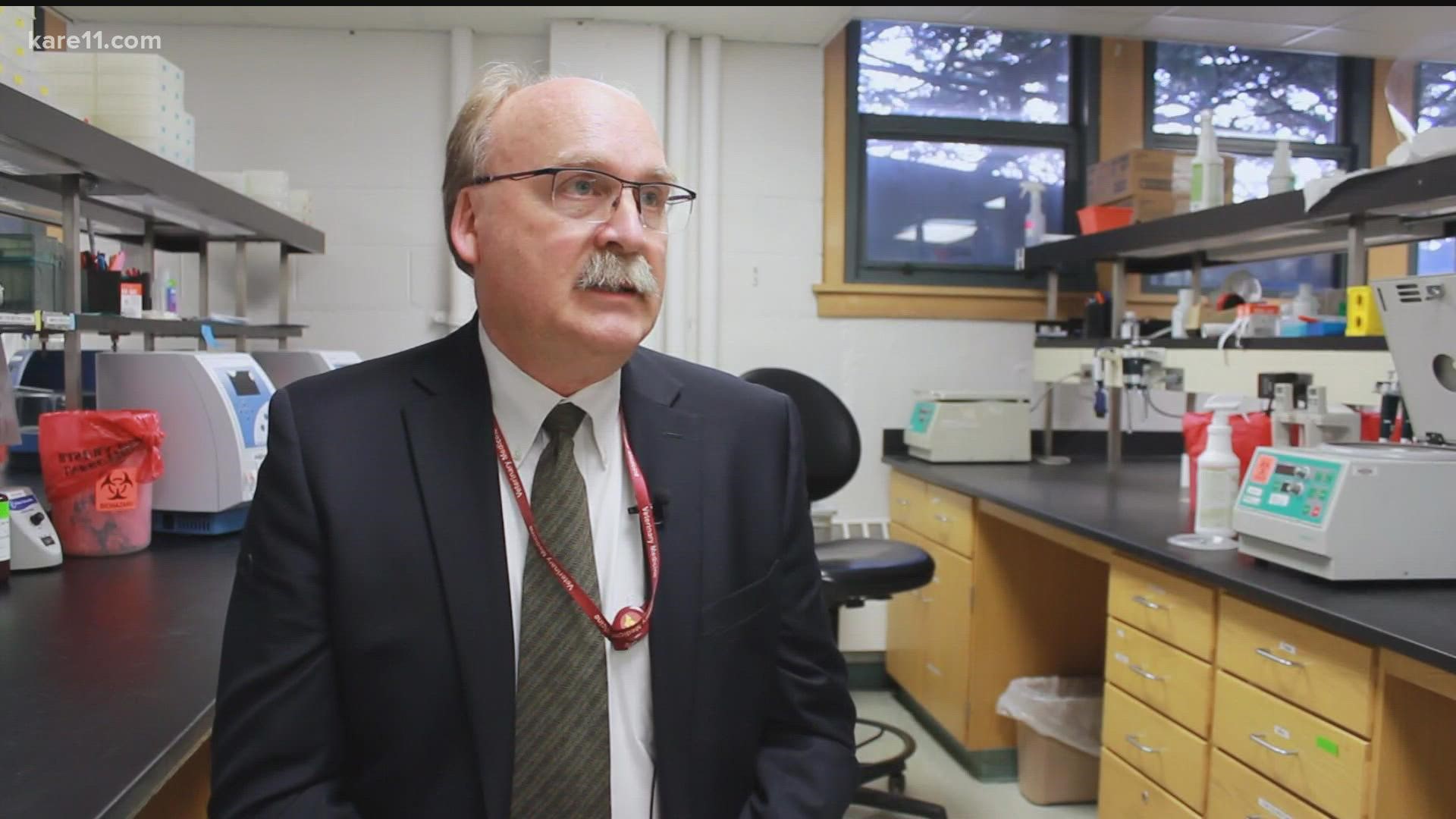ST PAUL, Minn. — There's a different kind of PCR testing that is whirring inside the University of Minnesota's Veterinary Diagnostic Lab. It is a part of the first defense line against the highly pathogenic avian influenza. It's kind of a year-round thing.
"There is a national poultry improvement plan where samples are tested routinely, both serology - so we check for antibodies and we also look for the virus by PCR testing, similar to what people are familiar with now in terms of COVID testing," director of the lab Dr. Jerry Torrison said.
Torrison said this lab along with the one in Willmar is responsible for processing samples and getting results out.
"We're one of about 60 labs across the country that can provide official testing for avian influenza," he added. "So when we get results, the result immediately goes to the board of animal health, and also to the USDA so we're connected electronically so they get their results almost in real time."
The turnaround time for a test is around four hours, to know if a flock is positive. This comes after having found out in 2015 during the last highly pathogenic avian influenza outbreak that quick results are key.
"Part of the need for the industry is that we get the results out as quickly as possible, so that is the opportunity for them to take the steps they need in real time, and to prevent ongoing spread," Torrison said.
Next door at the Raptor Center, Dr. Victoria Hall has been seeing more and more raptors being brought in for HPAI.
"About 90% to 100% raptors will die if they get infected with this train of highly pathogenic influenza," Hall said. "So often times you just find the raptor dead in the wild, or very close to death if they are out there."
She added that monitoring wildlife is also another litmus test for spread.
"We know that we are seeing cases of bald eagles, red shoulder hawks, red tail hawks...different owl species that have been found dead in the wild, so it's something to keep an eye on," she said. "It's something to make sure we know kind of what extent it's happening. It's an indicator that the virus is in the area so folks like our commercial poultry friends can take even more precautions to protect themselves."
The loss of millions of birds back in 2015 served as a lesson that access to thorough, rapid and frequent testing could help the industry and wildlife.
"Having options for testing, making sure we have capacity, understanding that it could be a long term sprint, we have to make sure that we take the necessary steps to ensure we can sustain a long term testing protocol," Torrison said.
Watch more local news:
Watch the latest local news from the Twin Cities in our YouTube playlist:

